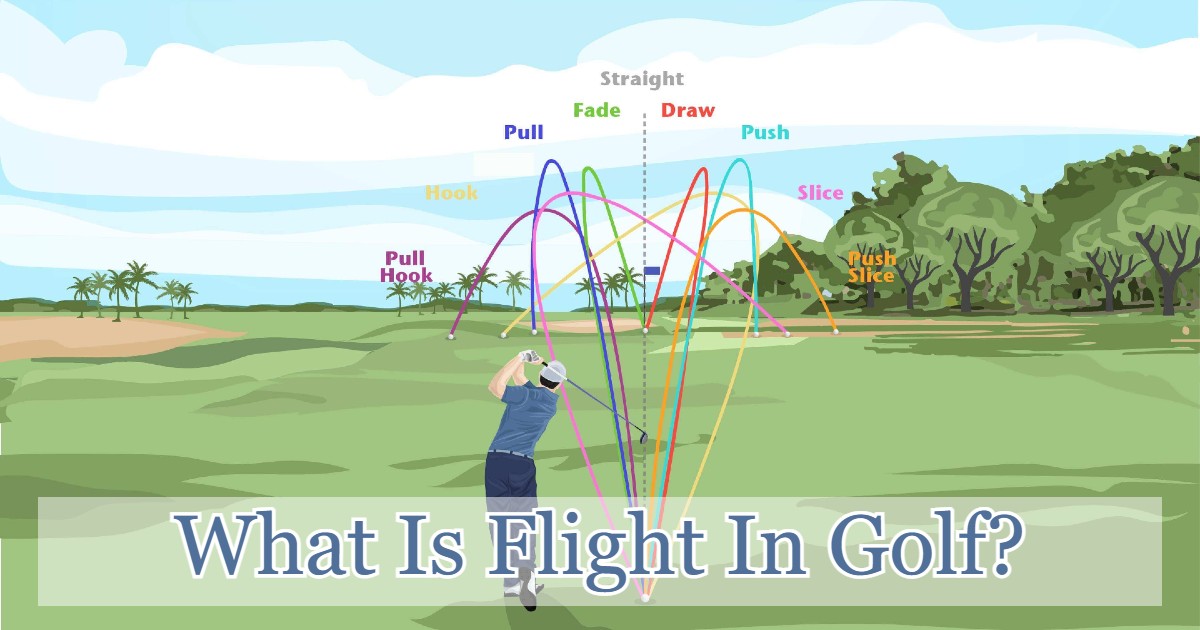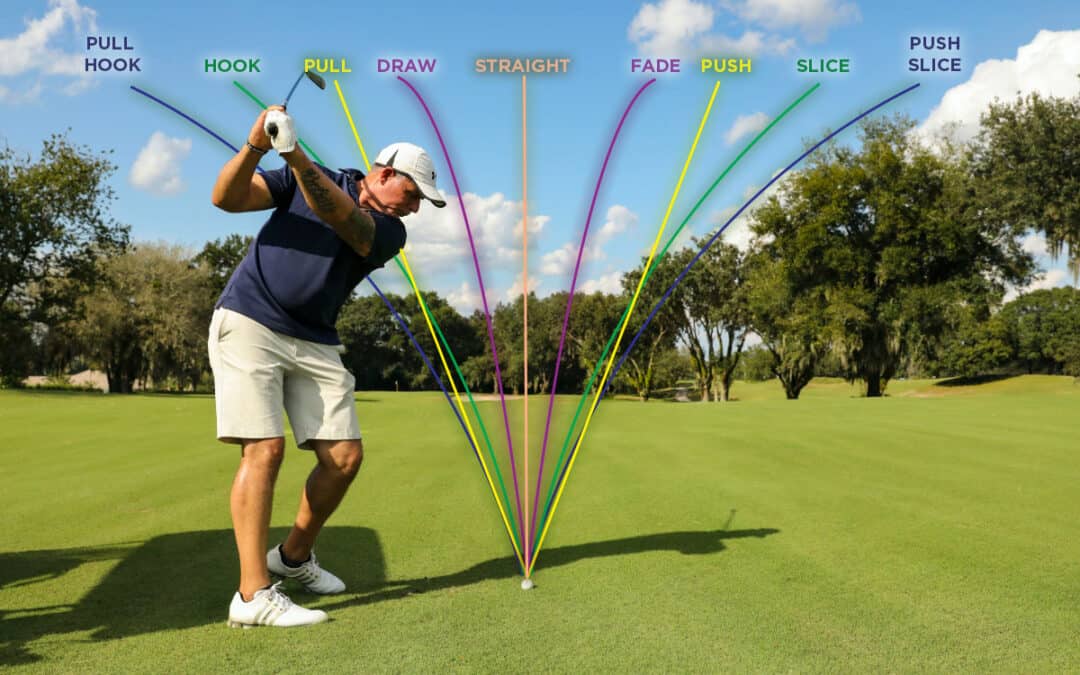A golfer’s ability to control the flight in golf balls is one of the most important aspects of their game. By learning how to manage their swing mechanics, they can influence where their shots land on the golf course.
- Flight is a word used to describe the trajectory of a golf ball. It can be influenced by many factors, including the player’s swing, the club head speed and angle of attack, and the club’s loft angle.
- Flight is a term used in golf to describe how far the ball travels after it leaves the clubface. A high-flight ball will travel farther than a low-flight ball, but there’s more to it than that.
- Flight is also used to describe the direction, shape, and spin of a golf ball as it travels through the air. The flight of a golf ball depends on several factors, including clubhead speed, angle of attack, and loft angle of the clubface at impact.

Content Summery
How Many Flights Are There In Golf?
There are four flights in golf, each with its own handicap system. The best way to understand what this means is to look at a typical handicap index.
- The top of the index is zero, and the bottom is 36. If you have an index of zero, it means that on any given day, you are capable of shooting a 72 (or below) for two rounds of 18 holes. The lower the number, the better your game is relative to other players with similar handicaps.
- If you have a handicap index of 10, then you’re 10 shots worse than someone with an index of zero. A 20 handicap means you’re 20 shots worse, and so on and so forth.
- Most courses divide their players into four groups, A, B, C, and D, based on their indexes from 0-36. Each group has a target score that players must try to achieve each week they play in order to keep their card in good standing with the club. If they don’t meet their target score after nine holes (or 18 holes), they receive a penalty shot, which means they must shoot one additional stroke per hole at which they failed to meet their target over nine holes (or 18 holes).
- The USGA, the governing body for golf in the United States, defines a handicap index as “a numerical representation of a golfer’s average score for 18 holes of golf.”
Types of Golf Ball Flights
There are three basic types of golf ball flights: high, medium, and low.
High Flight
This type of flight occurs when the angle of attack is steeper than normal, causing the golf ball to fly higher in the air than it would normally do so. For example, if you’re playing from an elevated tee box and want to stop it close to the green, then you’ll need a high flight (and possibly even some spin).
Low Flight
On the other hand, this type of flight occurs when the angle of attack is shallower than normal, causing the ball to fly lower in the air than it would normally do so. If you’re playing from a downhill lie and want to keep it out of trouble on an approach shot, then a low flight would be ideal.
Medium flight
Then there’s the medium flight which is somewhere in between both extremes but still has its own unique characteristics that make it ideal for certain players’ swing styles.
The most important thing to remember about golf ball flights is that they’re not set in stone. You can change them by altering your clubhead speed and impact position as well as your ball’s loft and spin rate.
So while a high flight might be ideal for someone else, there’s no reason why you can’t try out different types of golf balls to see which one fits best with your swing.
Swing Factors that Affect Ball Flight
Swing factors that affect ball flight include shoulder turn, hip turn, arm extension, and clubface rotation.
- Shoulder Turn: A full shoulder turn helps generate more clubhead speed and power and creates loft on the forward swing, which leads to added carry distance. The more you rotate your shoulders through impact, the more power you generate with each swing.
- Hip Turn: Hip turn is when your hips move away from the target (in this case, toward the target) during impact to create loft on the forward swing. This allows for extra distance when hitting down on the ball with an iron or hybrid club.
- Arm Extension: Arm extension is important because it allows you to make solid contact at impact by extending your arms through impact with your driver or long irons — or even wedges if you’ve got great timing!
- Clubface rotation: This is one of the most important factors in determining how your ball will land and where it will go after impact with the ground. If you don’t rotate your clubface at impact, you’ll hit a slice or a hook. If you do turn your face over at impact, then you’ll hit a draw or fade depending on how much face rotation you create during your swing.
Read More: What Is A Trail Fee In Golf?
How To Determine Flight?
Determining the flight of a golf ball is not an easy task, especially for a beginner. However, you can get an idea of the flight of your golf ball by observing its path on the course and seeing how it behaves when it hits different obstacles.
The type of shot you hit will determine how far your ball will go. A slice shot or hook shot will send the ball flying in the opposite direction from which it was hit, while a straight shot will send the ball straight ahead.
Knowing how to determine flight in golf is important because knowing what kind of shot to use at any given time will help you improve your game and lower your score.
Another way to determine flight is by looking at where the golf ball lands in relation to where you hit it from. If you hit it into a bunker but find yourself standing next to a tree, then there’s no doubt that something went wrong with your swing because that shouldn’t happen unless you had some kind of wind interference or something like that, which would require some adjustments before hitting another shot.
Technical Motions Impacted Ball Flight
Flight in golf is affected by your technical motions during the swing.
Swing Path
The path that you take when swinging a club. It’s how far you hit the ball with your high-quality golf club, and it can be affected by a number of factors, including weight distribution on your backswing, grip pressure, and wrist angle.
Your swing path will also change depending on which type of shot you’re trying to hit (e.g., fairway vs. greenside). You’ll want to keep this in mind when choosing which way around or through an obstacle would give you an advantage over others who have played before them (e.g., uneven lies).
Swing Plane
A term used for describing where along an imaginary line drawn from the tip through the center point at the address point that lies above ground level when standing straight upright with arms hanging down relaxed at sides, i.e., not holding anything but just standing there waiting for something else happening next second.
Swing plane is an important factor in determining the trajectory of your ball flight. It’s also a good way to visualize how far you hit each club.
For example, if you’re hitting the driver off the tee and can’t get it higher than five feet off the ground, then you need to work on improving your swing plane by practicing hitting shorter shots with other clubs so that you can hit the ball higher.

Popular Post: What Does Hole Out Mean in Golf?
Conclusion
Some golfers get very confused when they hear the term ‘flight.’ The word “flight” is a method of amateur golf handicapping in which different flight numbers are given to players according to the flight of their ball. Flight, in this sense, refers to the distance a ball will travel after it is hit.
This can be calculated by having a player swing at a flagstick and measuring the distance of the ball’s flight. This system is also often used by professional tournaments.
